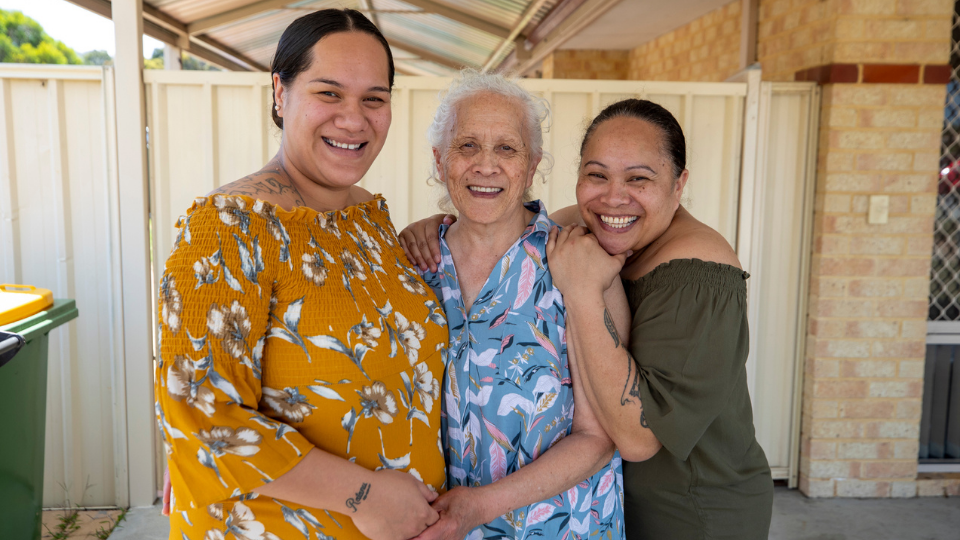USU UWLP Reports on the Status of Utah Pacific Islander Women

In 2021, 22 percent of Utahns were identified as those other than non-Hispanic White, according to the Kem C. Gardner Policy Institute. As the diversity of the state increases, the Utah State University Utah Women & Leadership Project (UWLP) has created a series of research reports on women of color. This report is the first in a series of five that details data on Utah women of each census race/ethnic category, including Pacific Islander, Asian, Black, Hispanic/Latino, and Native American.
Researchers used the U.S. Census description for “Native Hawaiian or Other Pacific Islander,” as a person having origins in any of the original peoples of Hawaii, Guam, Samoa, or other Pacific Islands. Currently, 13,921 Pacific Islander women reside in Utah, representing 0.45% of the general Utah population.
Susan Madsen, founding director of the UWLP and one of three report authors, said researchers sought information on a multitude of categories, yet the information was unavailable for various reasons. Researchers were able to collect data on five areas, including general demographics, health, basic needs, education, and income and employment, which is reported below.
“The research highlights both the available data and gaps in the information that could, if filled, help local and state decision-makers and leaders understand and address the needs of Utah girls and women,” she said. “The information can be used as a ‘source of light’ rather than a source of division that impedes progress.”
Health – Utah Pacific Islander women are more likely to lack health insurance (17.5%) than Utah women in general (11.2%). Further, they face more significant barriers to medical care, with 25.7% reporting that they forgo medical care due to cost (vs. 13.8% of other Utah women) and having no personal doctor (27.7% for Utah Pacific Islander women vs. 20.2% for other Utah women). However, Utah Pacific Islander women fare better in mental health outcomes than Utah women generally and are less likely to report bad mental health (20.5% vs. 23.6%) or have a diagnosis of major depressive disorder (14.5% vs. 29.7%).
Basic Needs – These include access to water, internet, safety, and freedom. Of note is internet access, where Utah Pacific Islander women who report having no internet access at home is 4.7%, similar to Utah women in general at 5.1%. However, these rates are much lower than the national rate for women (12.9% of U.S. Pacific Islander women and 10.4% of all U.S. women). In the area of safety, the Utah Office for Victims of Crime report that of individuals who applied for crime victim reparations between 2019 and 2021, 81.6% were women. Of those, 0.9% were Pacific Islanders, but the race/ethnicity of 28% of these women was classified as “unknown.”
Education – Pacific Islander women in Utah end their education with a high school diploma (32.6%), which is more than other Utah women (23.8%), and they have lower rates of attaining bachelor’s degrees (18.1% vs. 29.0%). The 5-year average completion rate of college-enrolled Pacific Islander women in Utah aged 18-35 is 22.3%, compared to all other Utah women at 27.9%.
Income – The yearly median personal income for Utah Pacific Islander women ($20,670) is slightly higher than Utah women generally ($19,245), which contrasts national trends with U.S. women having a higher median income ($23,106) than U.S. Pacific Islander women ($20,447). Similarly, the median personal wage of Pacific Islander women in Utah is slightly higher than for all other Utah women ($30,762 vs. $28,374) and for household income ($78,313 vs. $70,838). However, Pacific Islander women in Utah face greater rates of poverty (11.8% vs. 10.8%), which matches national trends.
Occupation – The percentage of Utah Pacific Islander women working as officials and administrators was 7.5% compared to other Utah women at 11.6%. Professional positions were 15.8% for Utah Pacific Island women compared to 22.1%, and technician occupations for Utah Pacific Islander women were 4.1% compared to 3%. Administrative support positions were 39.2% compared to 35% for all Utah women, and service and maintenance positions were 30% compared to 24.3% for all Utah women.
“As the state continues to become more diverse, it is critical that the Utah Women & Leadership Project conducts and reports research focused on women of color,” said Madsen. “As we provide greater access and opportunity to all residents, the state can use these data to better use the talents, ideas, and resources Pacific Islander women offer the state, employers, and Utah families.”
Additional report authors are Jessica C. Hill, Utah Valley University, and Marin Christensen UWLP associate director.
To see the full report, including references, click here. For further information on UWLP programs and projects, visit utwomen.org.
Contact
Susan Madsen
Susan.Madsen@usu.edu


 Utah 4-H & Youth
Utah 4-H & Youth